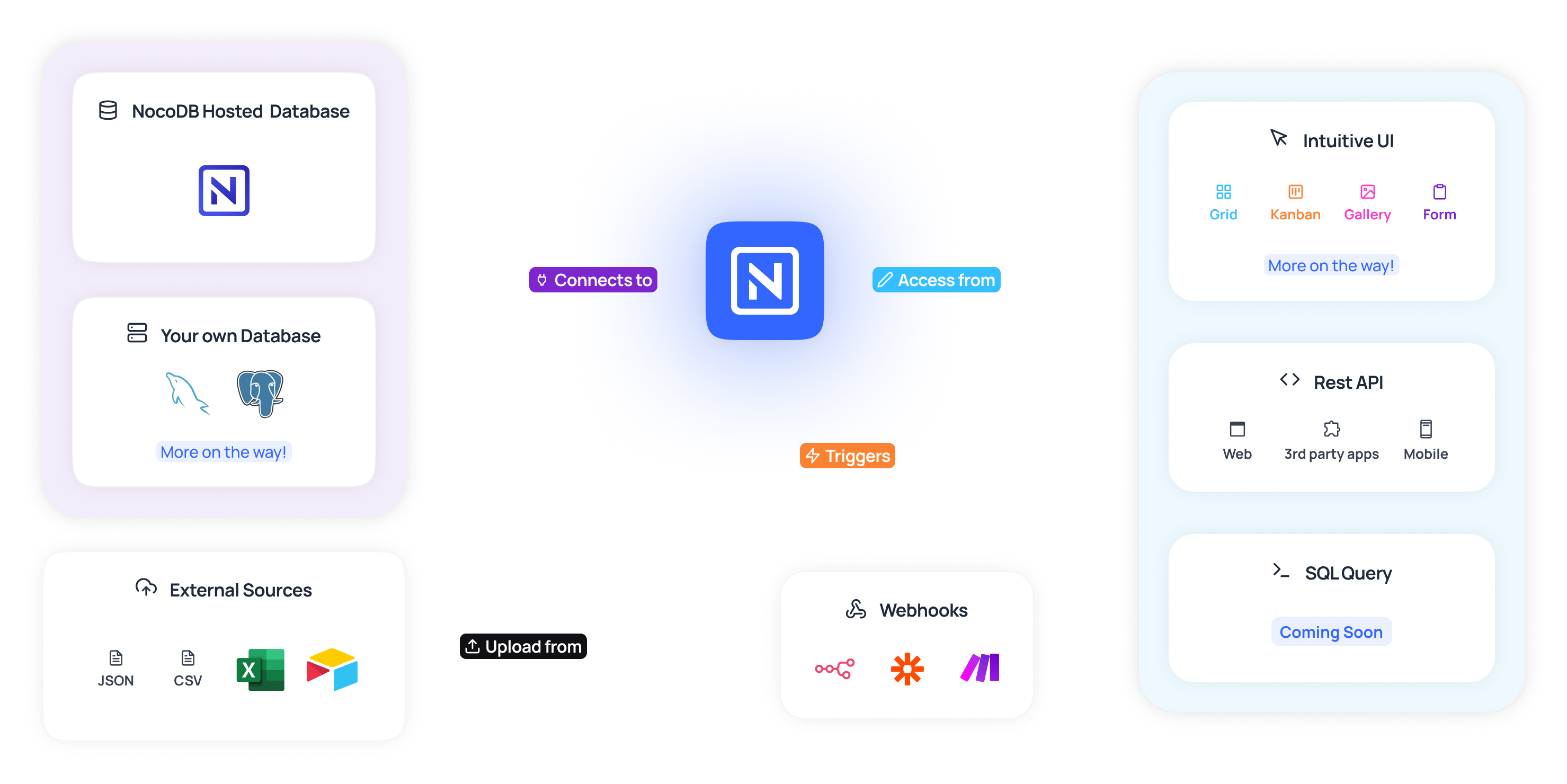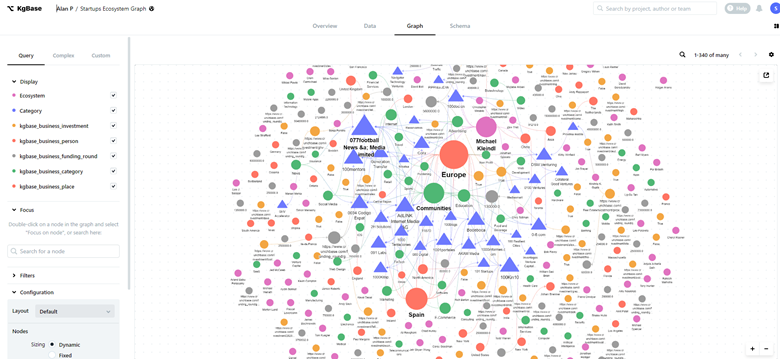No-Code Solutions for Open System Data Source Development: Develop Without Coding Abilities
No-Code Solutions for Open System Data Source Development: Develop Without Coding Abilities
Blog Article
Discover How Scalable Data Sources Can Be Utilized Without Coding to Improve Your Business Workflow
In today's busy service environment, the ability to handle and assess data effectively is extremely important. Scalable databases, specifically when matched with no-code options, provide a transformative strategy that equips non-technical customers to enhance procedures. By employing tools that call for no coding know-how, companies can enhance their operational abilities while reducing dependancy on IT sources. The real question lies in understanding how these options can be customized to details business demands and what possible obstacles may arise in their execution. Checking out these elements can light up the path to functional excellence.
Recognizing Scalable Data Sources
Scalable data sources are necessary for modern-day business procedures, enabling companies to effectively manage raising volumes of data without sacrificing performance. These data sources are designed to adjust and expand to the transforming needs of a business, guaranteeing that they can manage larger datasets and more complex inquiries as business needs advance.
Understanding scalable data sources includes acknowledging their two primary types: upright scaling and straight scaling. Upright scaling, or "scaling up," involves adding more power (CPU, RAM) to an existing server to boost performance. Conversely, horizontal scaling, or "scaling out," requires adding more web servers to distribute the load, which usually results in greater adaptability and fault tolerance.
One more crucial facet is the design of scalable data sources, which can be either relational or non-relational. Relational databases, such as MySQL and PostgreSQL, are structured and use SQL for questions, while non-relational databases, like MongoDB and Cassandra, use more versatility with unstructured data.
Inevitably, understanding scalable data sources is crucial for businesses aiming to take advantage of data as a calculated possession, allowing them to stay affordable in an increasingly data-driven atmosphere.

Benefits of No-Code Solutions
Opening the potential of no-code options equips companies to enhance procedures and boost performance without the demand for considerable programs knowledge. These platforms allow non-technical customers to develop, change, and take care of databases effortlessly, thus equalizing access to technology throughout teams.
One of the primary advantages of no-code services is their rate of execution. Services can promptly deploy applications and automate processes, substantially reducing the moment spent on development cycles. This dexterity makes it possible for companies to react without delay to market changes and customer requirements, fostering an affordable side.
Additionally, no-code platforms decrease reliance on IT departments for daily tasks, permitting technical teams to focus on even more intricate projects that need specialized skills. This shift not just maximizes source allocation however likewise advertises development within the organization.
Cost-effectiveness is an additional advantage, as no-code solutions can reduce advancement and maintenance costs. By lessening the need for coding proficiency, companies can harness the abilities of their existing workforce without the expenses of working with extra personnel.
Popular No-Code Data Source Devices
The increase of no-code solutions has actually led to the introduction view publisher site of various database tools that deal with companies looking for effectiveness and access. These tools encourage users with limited technical experience to produce, take care of, and control data sources seamlessly.

Caspio sticks out for its ability to build web applications with no coding. It permits businesses to produce robust data sources and deploy applications promptly, satisfying numerous market requirements. Likewise, Knack provides straightforward interfaces and powerful data administration abilities, allowing companies to build custom applications customized to their operations.

Use Situations in Service Operations
Just how can services utilize database devices to improve their operations? Scalable data sources give companies with powerful capacities to manage and evaluate information without the need for considerable coding knowledge. These tools can improve numerous organization processes, eventually causing boosted efficiency and performance.
One prominent use instance is consumer connection monitoring (CRM) Organizations can use scalable databases to track client interactions, choices, and comments, allowing personalized communication and far better solution. By systematizing this information, groups can work together extra successfully and respond to consumer demands in real-time.
Another substantial application is inventory administration. Firms can employ no-code data source devices to check supply degrees, track shipments, and projection need. This makes certain optimal stock levels, reduces waste, and minimizes stockouts.
Furthermore, project monitoring can gain from scalable data sources by allowing teams to manage tasks, deadlines, and resources in a merged platform. With real-time updates and data visualization, project managers can make enlightened decisions.
Beginning With Application
Carrying out scalable check my reference data sources in service operations needs a structured technique to ensure effective combination and application. The initial step is to conduct a thorough requirements assessment, determining particular business demands, information kinds, and anticipated development patterns. This fundamental understanding will certainly direct the option of the proper database remedy.
Following, choose an user-friendly, no-code database platform that straightens with your operational objectives. no-code. Numerous modern-day services use user-friendly user interfaces, permitting non-technical users to take care of information successfully. After choosing a platform, develop a clear data style that details how information will certainly be organized, accessed, and kept
Training is essential; ensure that staff member are furnished with the needed skills to make use of the data source. Think about providing tutorials or workshops to familiarize team with the system's performances.
Final Thought
Finally, the combination of scalable data sources via no-code services provides considerable benefits for company operations. These platforms empower non-technical individuals to efficiently handle and assess information, helping with improved decision-making and cooperation. By embracing devices such as Airtable and Concept, organizations can enhance processes and decrease dependence on IT resources. Ultimately, leveraging these modern technologies can result in boosted performance and operational performance, placing services for sustained development in a competitive landscape.
One popular no-code data source device is Airtable, which combines the performance of a spreadsheet with the power of a data source.Exactly how can businesses utilize database tools to improve their operations? Businesses can make use of scalable data sources to track client interactions, choices, and feedback, allowing individualized communication and better service.Implementing scalable data sources in service operations needs an organized technique to this ensure successful assimilation and use.In conclusion, the assimilation of scalable data sources with no-code options provides significant advantages for organization operations.
Report this page